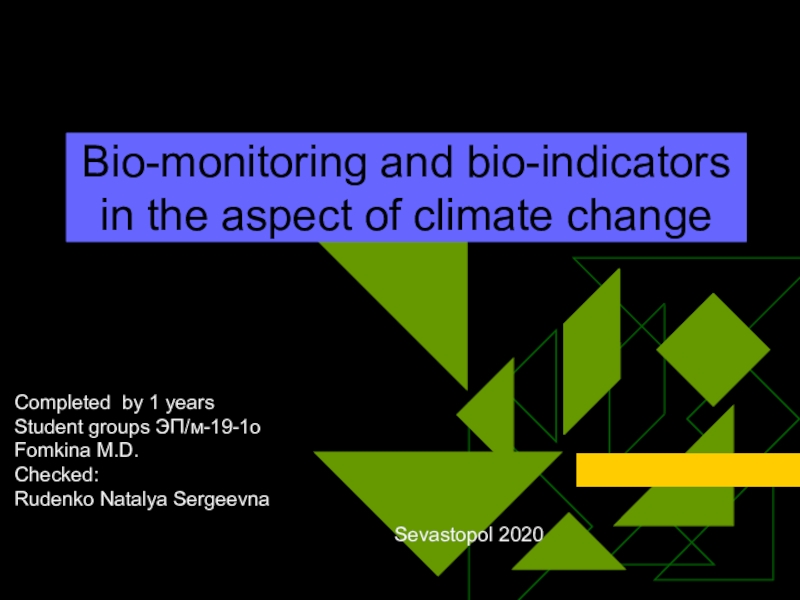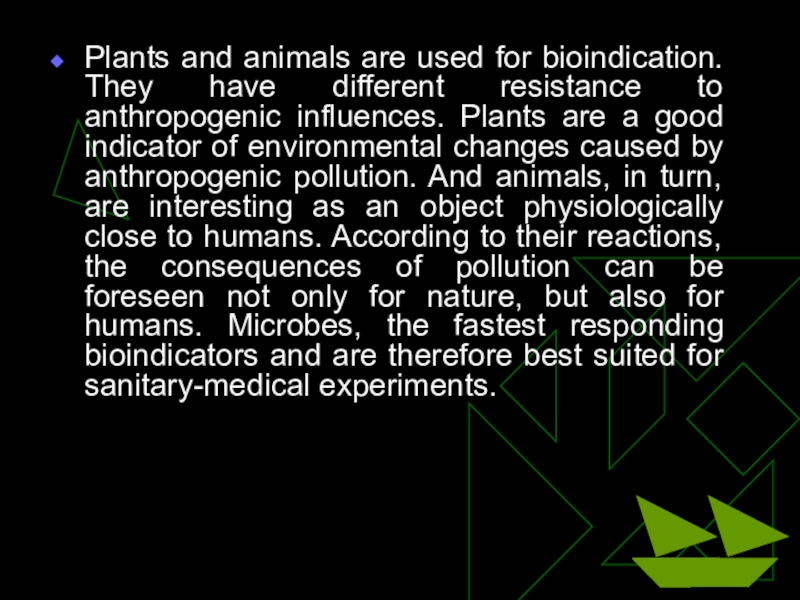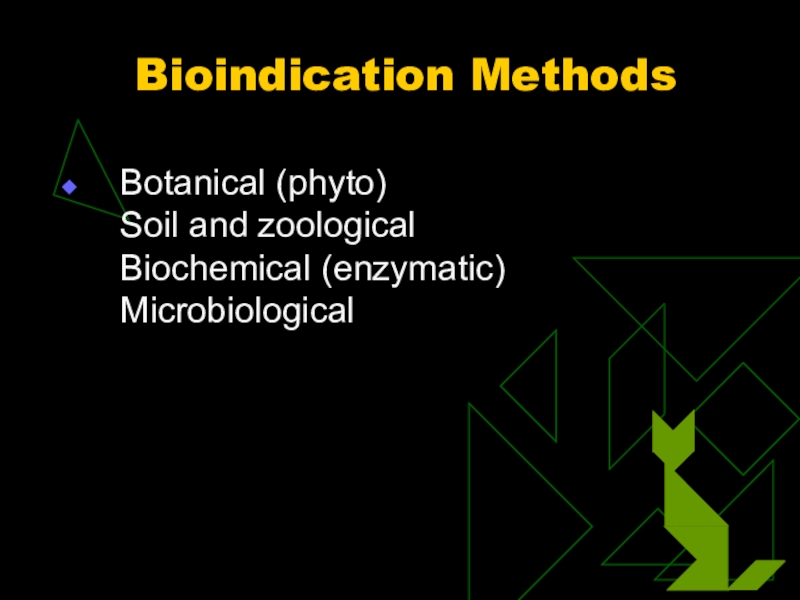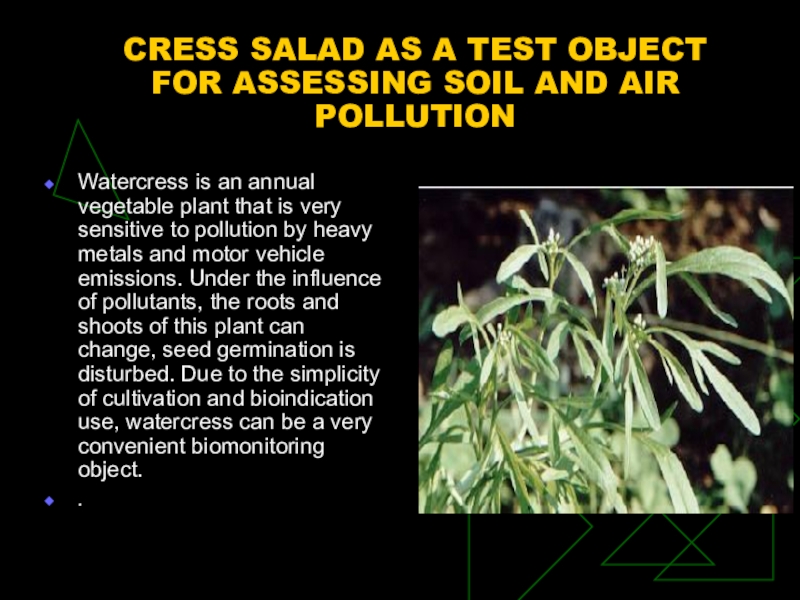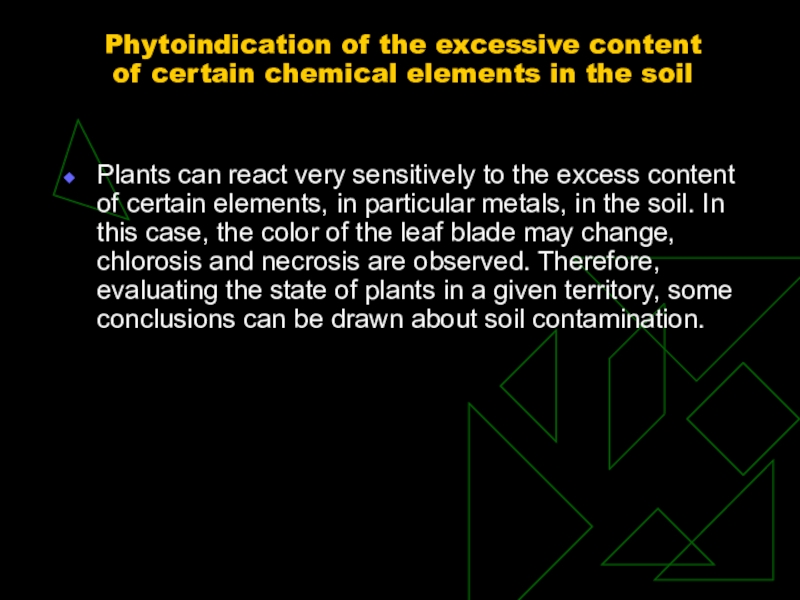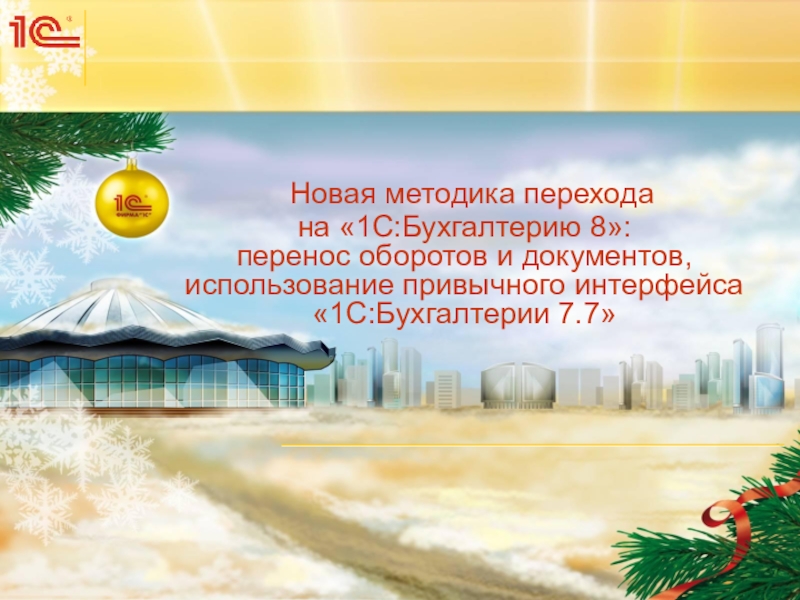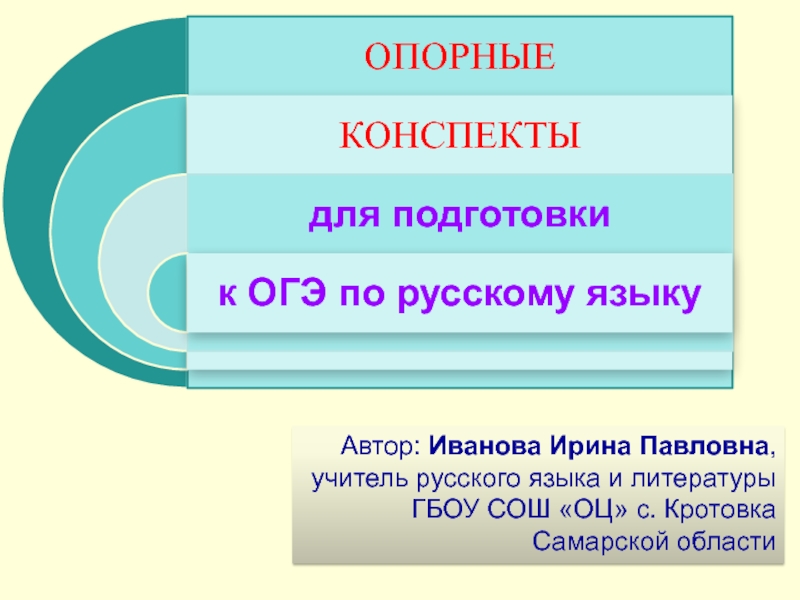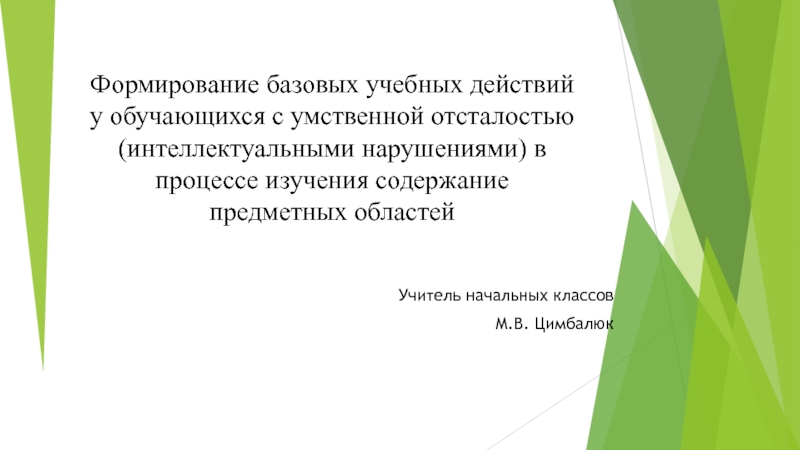Разделы презентаций
- Разное
- Английский язык
- Астрономия
- Алгебра
- Биология
- География
- Геометрия
- Детские презентации
- Информатика
- История
- Литература
- Математика
- Медицина
- Менеджмент
- Музыка
- МХК
- Немецкий язык
- ОБЖ
- Обществознание
- Окружающий мир
- Педагогика
- Русский язык
- Технология
- Физика
- Философия
- Химия
- Шаблоны, картинки для презентаций
- Экология
- Экономика
- Юриспруденция
Bio-monitoring and bio-indicators in the aspect of climate change Completed by
Содержание
- 1. Bio-monitoring and bio-indicators in the aspect of climate change Completed by
- 2. Bioindication is an assessment of the state
- 3. Plants and animals are used for bioindication.
- 4. Bioindication MethodsBotanical (phyto) Soil and zoological Biochemical (enzymatic) Microbiological
- 5. The bioindication method allows you to:Provide a
- 6. Types of bio-indicatorsbotanical; zoological; microbiological; biochemical
- 7. Soil fertility bioindicatorsThe fertility of some soils
- 8. Слайд 8
- 9. Bio Indicators of Acid SoilsSoil acidity is
- 10. Слайд 10
- 11. ASSESSMENT OF SALT SOIL CONTAMINATION OF SOIL
- 12. INDICATION OF THE CONDITION OF THE
- 13. CRESS SALAD AS A TEST OBJECT FOR
- 14. CRESS SALAD AS A TEST OBJECT FOR
- 15. Phytoindication of the excessive content of certain
- 16. Таблица 2. Признаки избыточного содержания некоторых микроэлементов в почве
- 17. THANK YOU FOR THE ATTENTION!!!
- 18. Скачать презентанцию
Bioindication is an assessment of the state of the environment by the reactions of a living organism. This reaction allows us to evaluate the anthropogenic impact on the environment in terms
Слайды и текст этой презентации
Слайд 2Bioindication is an assessment of the state of the environment
by the reactions of a living organism. This reaction allows
us to evaluate the anthropogenic impact on the environment in terms of biological meaning.Слайд 3Plants and animals are used for bioindication. They have different
resistance to anthropogenic influences. Plants are a good indicator of
environmental changes caused by anthropogenic pollution. And animals, in turn, are interesting as an object physiologically close to humans. According to their reactions, the consequences of pollution can be foreseen not only for nature, but also for humans. Microbes, the fastest responding bioindicators and are therefore best suited for sanitary-medical experiments.Слайд 4Bioindication Methods
Botanical (phyto)
Soil and zoological
Biochemical (enzymatic)
Microbiological
Слайд 5The bioindication method allows you to:
Provide a continuous assessment of
environmental conditions and identify the current state of the human
environment. To establish the reasons for the negative impact on the environment, natural objects, and predict damage. Make a forecast of changes in the state of the environmental situation in the near and distant futureСлайд 7Soil fertility bioindicators
The fertility of some soils can be high,
others - low, however, in both cases it is determined
by the nature of the soil formation process and soil formation factors.Слайд 9Bio Indicators of Acid Soils
Soil acidity is the most important
environmental factor that determines the living conditions of soil organisms
and higher plants, as well as the mobility of pollutants in the soil.Слайд 11ASSESSMENT OF SALT SOIL CONTAMINATION OF SOIL ON LYPE LEAVES
Linden
is very sensitive to soil contamination with salts that come
here with sand in the winter. An indicator of the reaction is marginal chlorosis on the leaves. Therefore, by the magnitude of the damage to the linden leaf blades, one can judge the degree of salinity of the lawns.Слайд 12 INDICATION OF THE CONDITION OF THE ENVIRONMENT BY THE
FREQUENCIES OF THE MEETING OF WHITE CLOVER HAIRDRESSERS
The influence of
anthropogenic factors quite often affects the phenotypic structure of populations of plant and animal organisms. The frequency of occurrence of some hair dryers is a biological indicator of exposure, in particular, environmental pollution.
In white clover, which is quite widespread, the shape of a gray-haired pattern on leaves can be used as an indicator of environmental pollution.Слайд 13CRESS SALAD AS A TEST OBJECT FOR ASSESSING SOIL AND
AIR POLLUTION
Watercress is an annual vegetable plant that is very
sensitive to pollution by heavy metals and motor vehicle emissions. Under the influence of pollutants, the roots and shoots of this plant can change, seed germination is disturbed. Due to the simplicity of cultivation and bioindication use, watercress can be a very convenient biomonitoring object..
